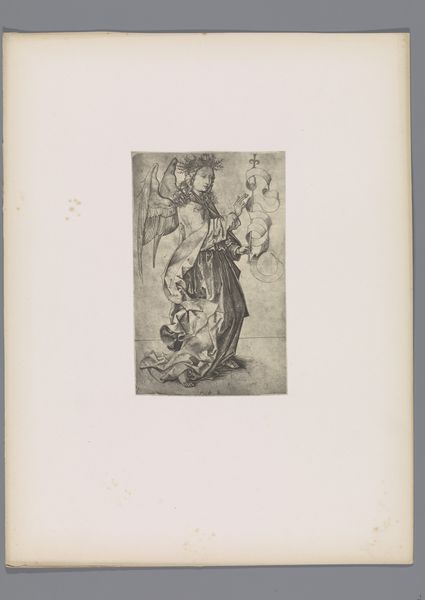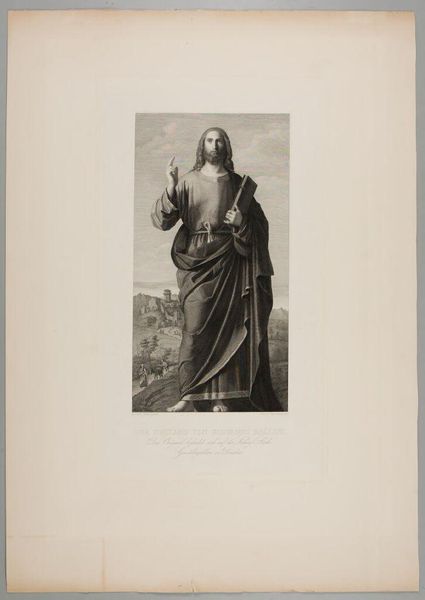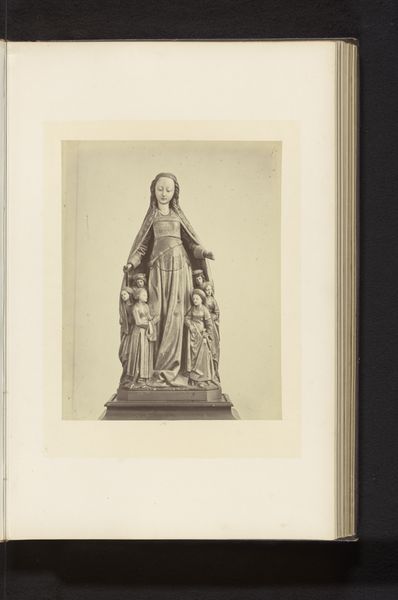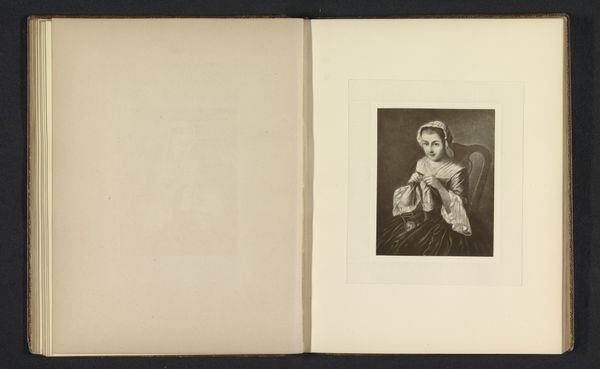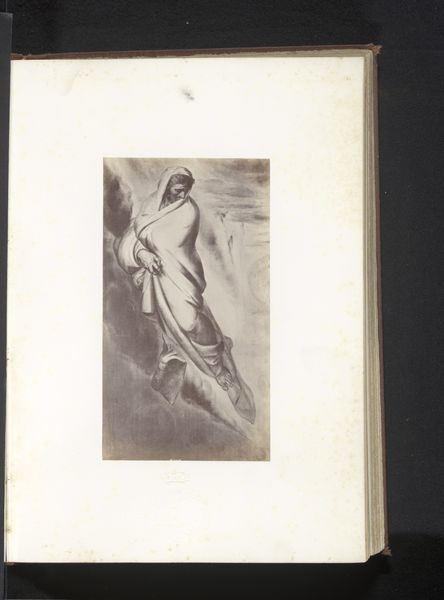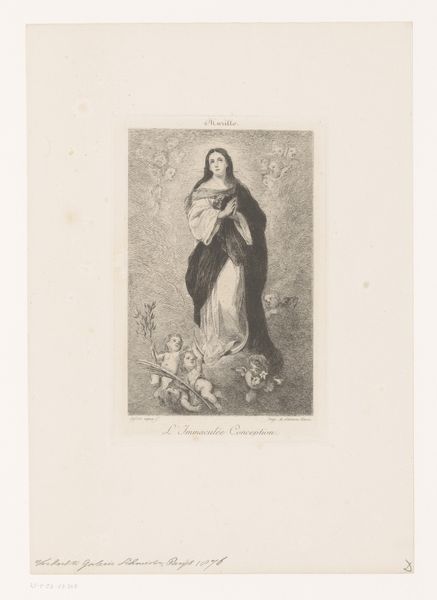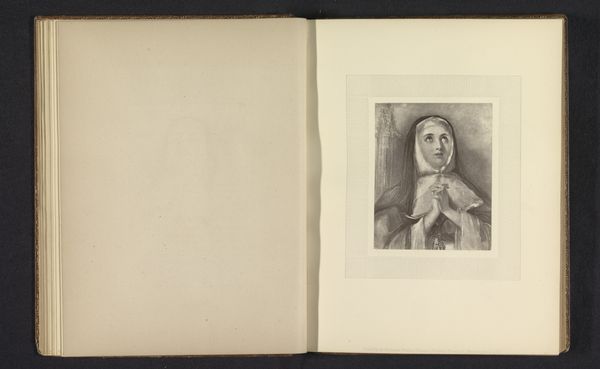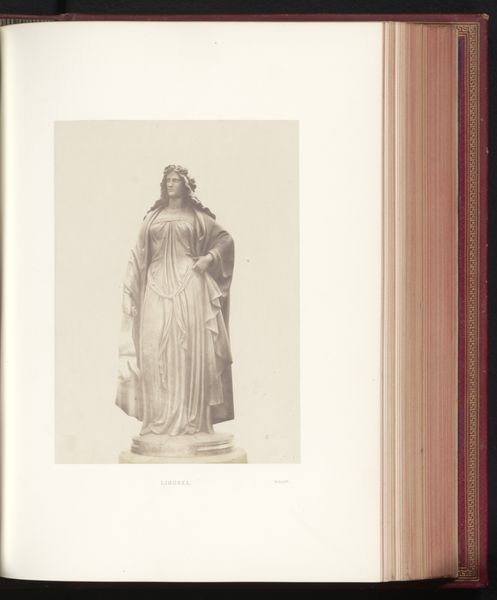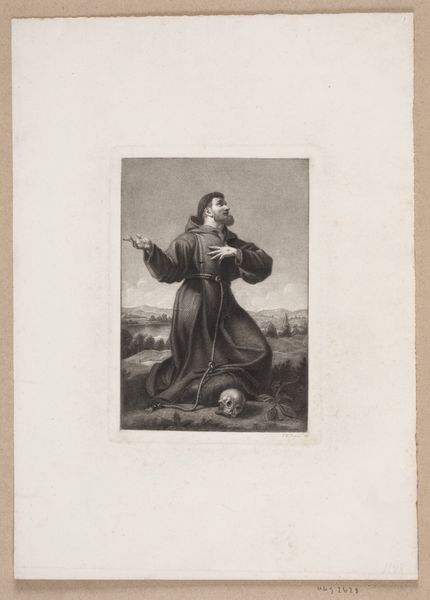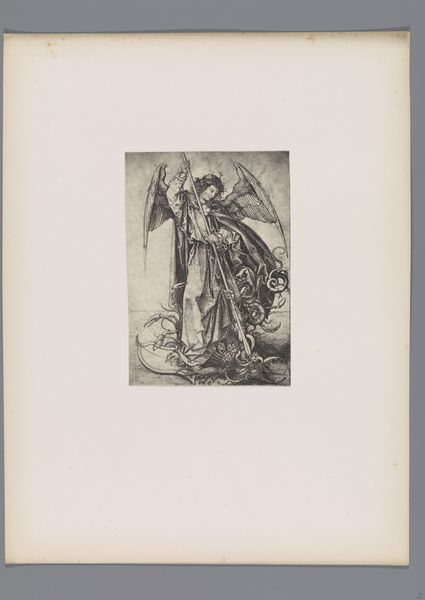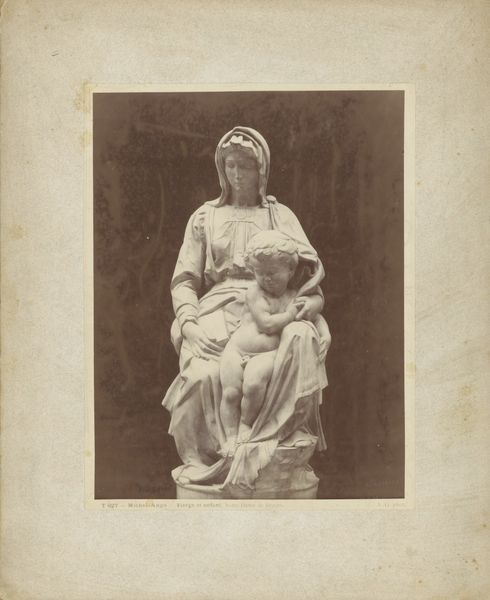
Fotoreproductie van het schilderij De zegenende Christus door Cima da Conegliano before 1875
0:00
0:00
print, photography
#
portrait
# print
#
landscape
#
photography
#
italian-renaissance
Dimensions: height 244 mm, width 119 mm
Copyright: Rijks Museum: Open Domain
Curator: What immediately strikes me is the almost austere, solemn presentation. The tones are muted, the figure is centered. It’s very... formal. Editor: That formality stems, in part, from its source. We're looking at a photographic reproduction, dating to before 1875, of a painting titled "The Blessing Christ" by Cima da Conegliano. So, we are viewing it through layers of mediation – both the original Renaissance image and this later photographic interpretation. Curator: Absolutely. And the iconography is classic, isn't it? The raised hand in blessing, the book held close – suggesting divine authority and the promise of salvation. But something feels… different. There's a human vulnerability that complicates the divine symbolism. Editor: Perhaps that’s because Conegliano places Christ within a very tangible, human landscape. The background features a town, suggesting the earthly realm that Christ, in Christian theology, came to redeem. I wonder about the people in the background -- so small and seemingly oblivious to the figure of Christ? Curator: Right, the proximity of the everyday to the divine is a consistent theme of the Italian Renaissance, which this piece obviously echoes. How does it change the nature of authority when we recognize power comes from these specific cultural circumstances? Editor: It raises the very issue of representation itself. Through photography, the Renaissance ideal of the divine becomes reproducible, accessible. In that accessibility, the image risks becoming flattened, its power diffused across a wider audience, and it brings in the questions about class and social status inherent in these images. Curator: True. But, in flattening the original image it does become another representation, something for an evolving world and population. And in its reproduction, new social meaning emerges, in its changing social and political atmosphere. Editor: A transformation in understanding for an always transforming humanity. Curator: Well put. In any case, I will leave with an enduring question mark, since as we change so will meaning of the images of culture, divinity, authority. Editor: And, it must be said, such exploration highlights art's continuous impact within and beyond time, constantly adapting as interpretations of human life evolve.
Comments
No comments
Be the first to comment and join the conversation on the ultimate creative platform.
